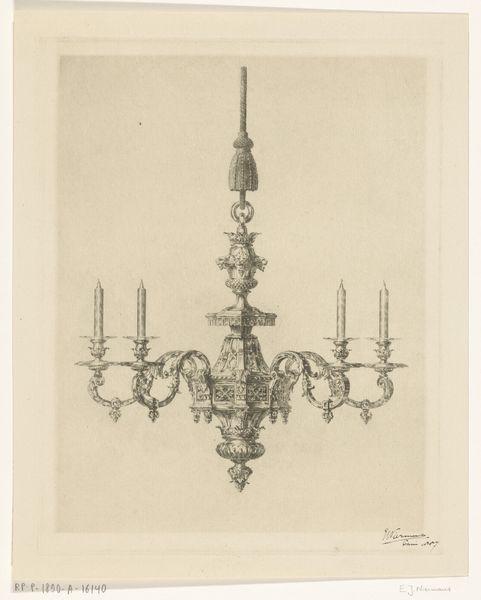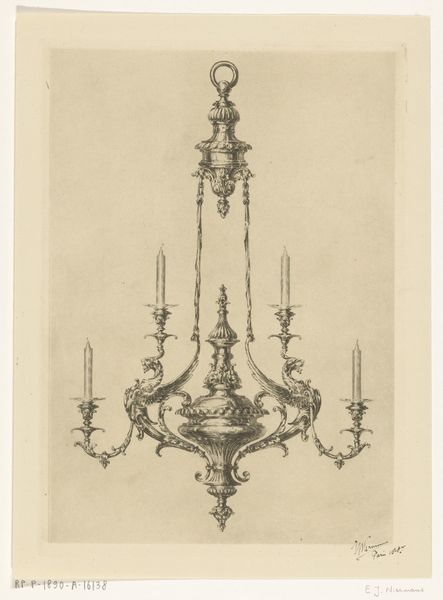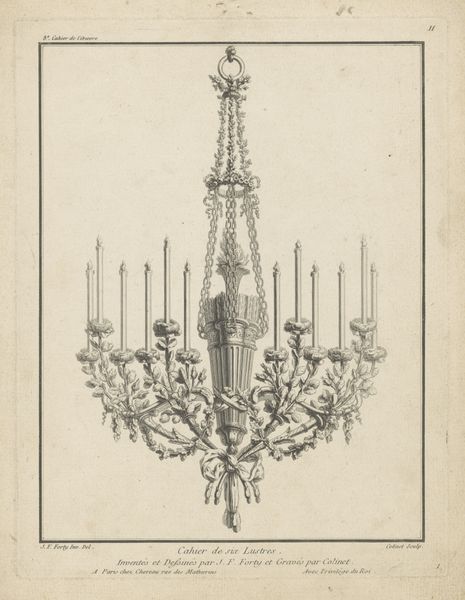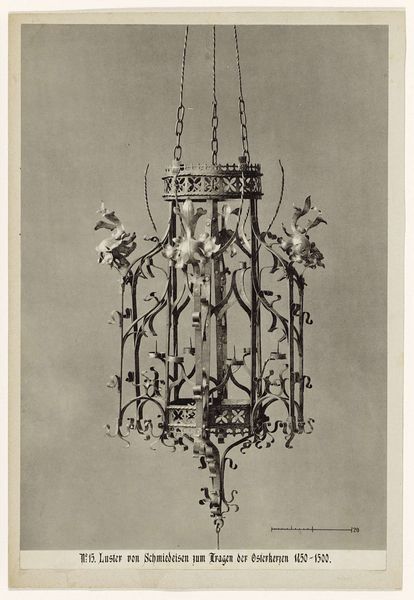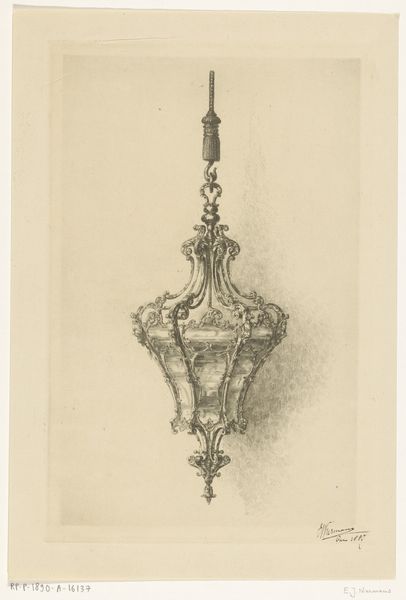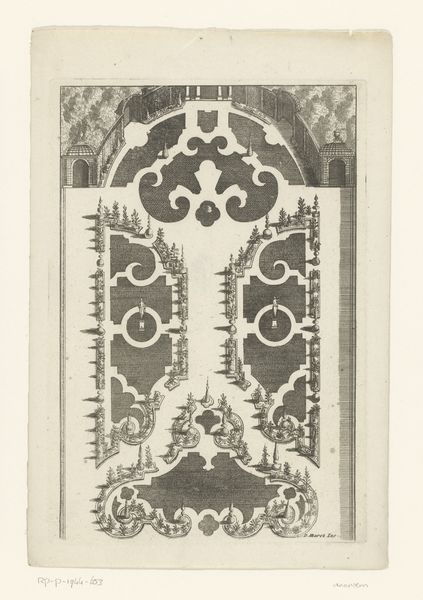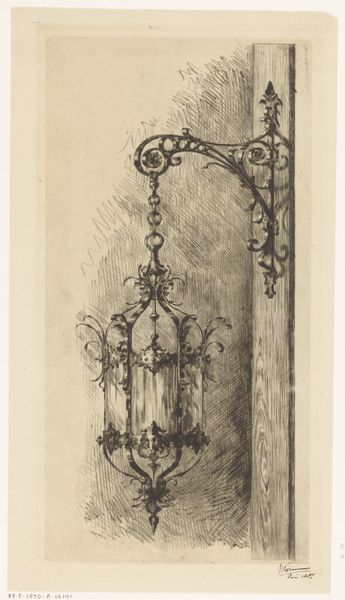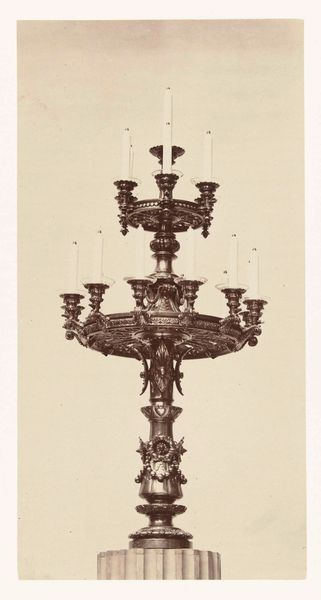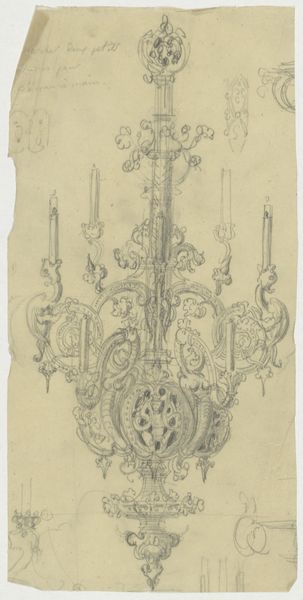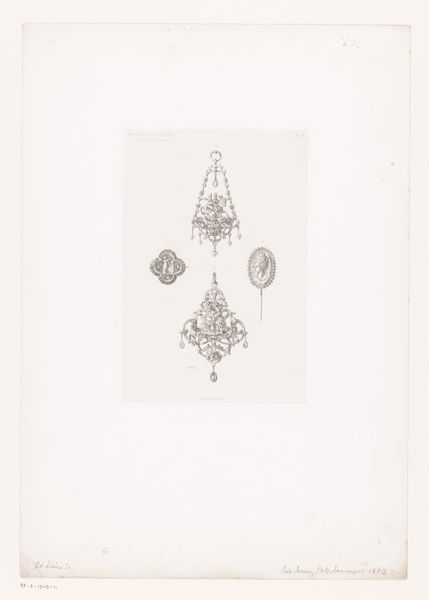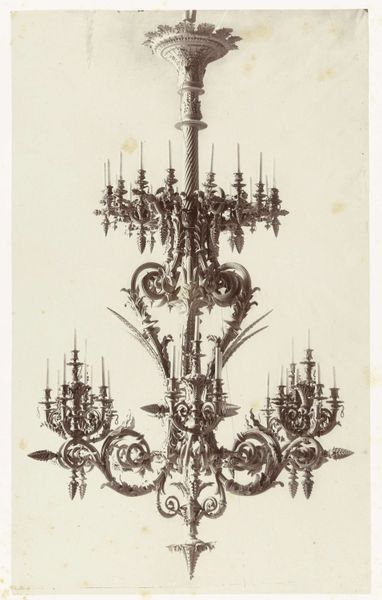
drawing, print, paper, ink
#
drawing
#
art-nouveau
#
blue ink drawing
# print
#
old engraving style
#
paper
#
ink
#
decorative-art
Dimensions: height 296 mm, width 197 mm
Copyright: Rijks Museum: Open Domain
Eduard Niermans rendered this design for a ten-candle chandelier using pen and ink, a medium traditionally employed for detailed studies. The linear precision shows that Niermans likely envisioned the chandelier to be made out of metal. Consider the skilled labor required to produce such an ornate object. The intricate floral and vegetal motifs, along with the pineapple form at its center, would demand expert casting and chasing. The design's opulence hints at its intended context: a wealthy home, perhaps even a palace or grand hotel. The ten candles would have produced a dazzling, if not slightly smoky, light, a visible symbol of luxury. The design reflects the cultural values of the time, but also the economic inequalities inherent in its production and consumption. Recognizing the labor and resources embedded in such a design helps us appreciate the chandelier not just as a decorative object, but as a material manifestation of social and economic forces.
Comments
No comments
Be the first to comment and join the conversation on the ultimate creative platform.
